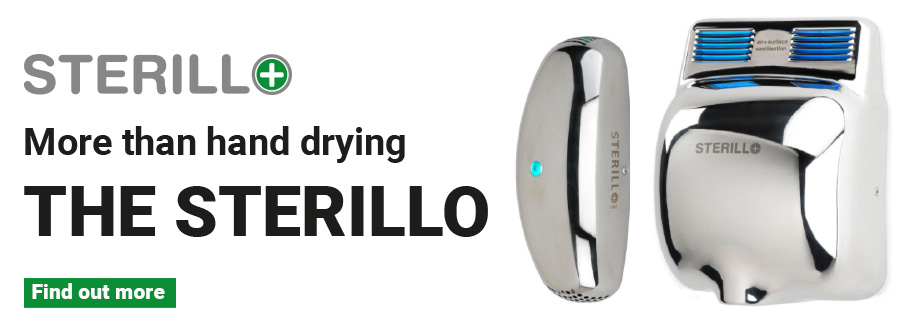
The past few years have really thrust hygiene into the spotlight. From robust cleaning to hand hygiene, people have become increasingly aware of the role that cleanliness plays in managing infection transmission. Steve Levy looks forward to what this might mean throughout 2022.
WE HAVE learnt a lot since coronavirus first hit our shores in early 2020 and today we understand only too well that both contaminated surfaces and airborne pathogens can spread this incredibly contagious virus.
Before the pandemic, just 20% of people washed their hands properly but with hand hygiene acting as one of the main lines of defence against COVID-19, compliance is hopefully much higher as we enter the New Year. But hand hygiene is about much more than soap and water. A proper dry is just as crucial. In fact, with damp hands a thousand times more likely to spread germs, hand washing is almost pointless if you ignore the hand dryer on the way out of the washroom.
As well as surface bacteria found on taps, dispensers, and door handles, the air also carries a risk of infection, particularly in small, poorly ventilated areas like washrooms. And itís not just covid we need to be wary of. Illnesses like the common cold and influenza are also spread by contaminated air droplets. Even the most robust cleaning regime wonít be able to stand up to these invisible enemies, which is why adopting air sterilisation is key.
This is why a dual approach, that tackles both hand and air hygiene, is vital as we move into 2022. We hope to see people doubling up on their defence and investing in smart, innovative products that can kill infections at source.
Our For more information visit Sterillo DUO, for example, is the most hygienic hand dryer on the market, and the only unit in the world capable of killing viruses like COVID-19.
It couples rapid hand drying with our state-of-the-art air sterilisation technology, which kills 99.9% of all airborne germs. The unit draws in air to the mirrored killing chamber, sterilises it with UVC light rays, and recirculates clean air, rendering germs unable to multiply and therefore spread.
The technology, which has been extensively tested at the UK Governmentís Public Health England labs at Porton Down, has been proven to kill 98.9% of germs within one hour of being switched on. It then continues to sterilise the air continuously, up to ten times every hour.
By doubling up on your approach to hygiene, you can strengthen your defence against surface and airborne pathogens, and help keep infection outbreaks at bay.
